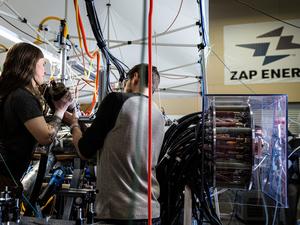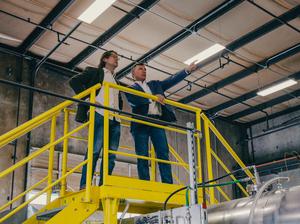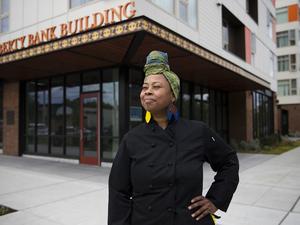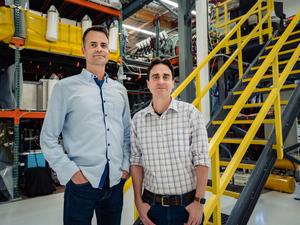
Everett-based fusion company Zap Energy is looking to expand its staff and physical footprint after raising a $160 million Series C round it announced Wednesday.
Zap Energy's Chief of Staff AJ Kantor said the company has just over 60 employees, up from a little over 30 when Kantor joined the company in November. With the funding, Zap Energy plans to 30 to 40 people over the next couple of months, Kantor added.
"There's a tremendous amount of work to do," Kantor said. "The more people we have, the more super-high-quality people that we have, the faster we can move."
Zap Energy has space in Everett and Mukilteo. Kantor said both facilities have lab and office areas, but Everett is where most of the scientists working on the machines are, while most of the corporate employees are in Mukilteo. She added that the company is growing its footprint but didn't have specifics. Almost all of Zap Energy's employees are based in the Seattle area, and most employees work on site instead of remotely, Kantor said
Fusion companies such as Zap Energy are attempting to create carbon-free energy by using heat to force atomic particles to collide and release energy. A key milestone in the development of fusion will be the creation of a system that produces more energy than it consumes. Kantor said it's impossible to know exactly when that moment will come, but the company feels it is close.
Kantor said that while other approaches to fusion energy rely on giant magnets, Zap Energy uses what's known in physics as a "Z-pinch," or passing current through plasma to create a magnetic field around the plasma. She added the technique can make fusion energy cheaper, and it results in smaller reactors.
Still, harnessing fusion energy has been an elusive goal for decades. The Department of Energy's Oak Ridge National Laboratory notes nuclear fusion reactors hit temperatures of 150 million degrees Celsius, or 10 times hotter than the center of the sun, and making a plant that can withstand the heat and pressure while still producing energy is a major challenge.
According to Kantor, advances in modeling over the years have made Zap Energy's approach to fusion more viable. Technology and power supplies have also become more sophisticated, she added.
Fusion energy is gaining attention and funding from venture capitalists. Everett-based Helion raised $500 million in November and aims to have its seventh-generation fusion generator operating in 2024. Kantor said Zap Energy's approach requires less capital, and the company can do a lot with the money it has raised.
"In the fusion game, at least in my personal opinion, a rising tide raises all ships. If anyone succeeds, we're happy," Kantor said. "In terms of what our main goal is, at least right now, it's getting these fusion cores onto the grid. So in the same place that you would use a coal furnace and a power plant, you could use a fusion device instead."








